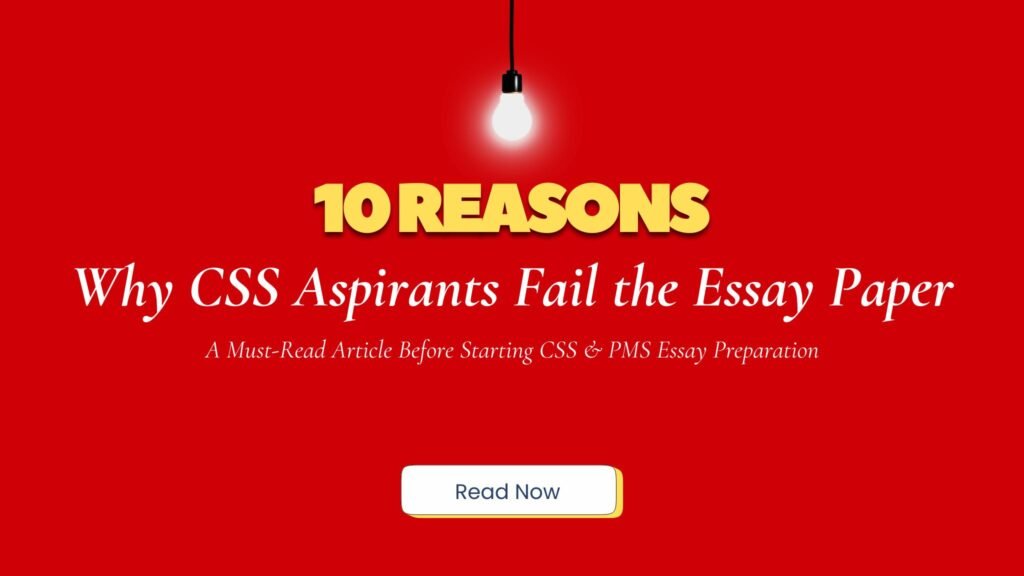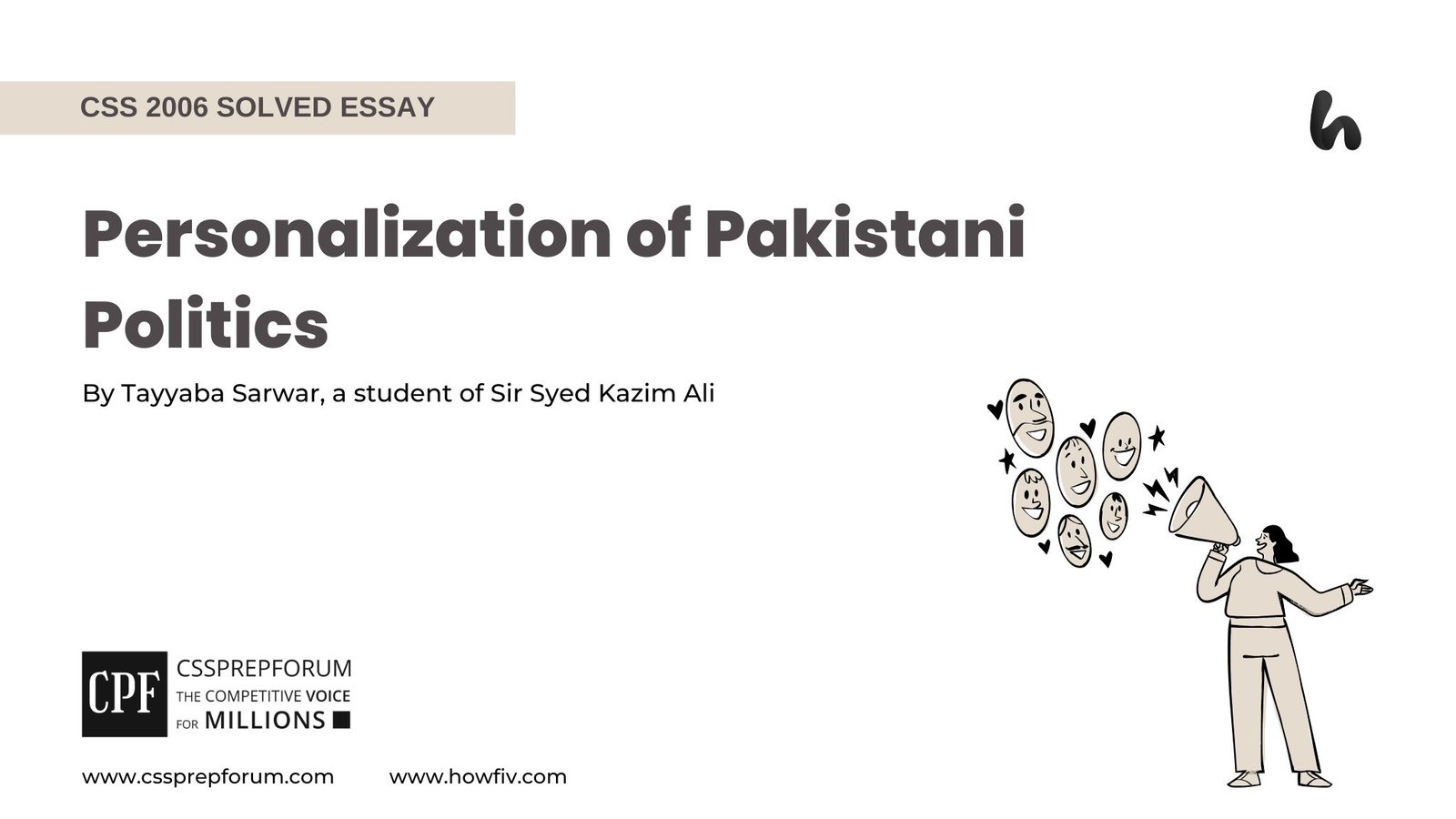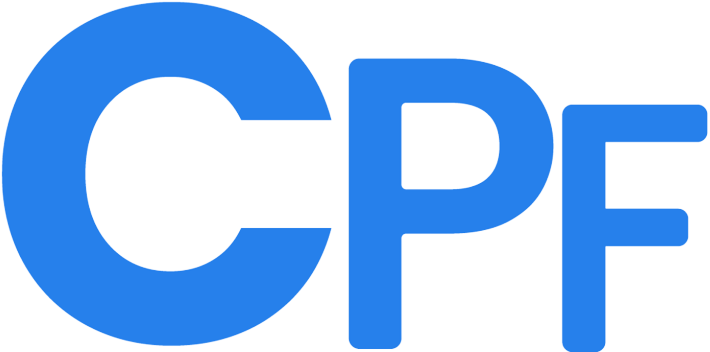Every year, thousands of aspirants enter examination halls with hope in their hearts and notes in their hands, but only a few return with dignity attached to their results. Among all compulsory subjects, English Essay remains the most feared, the most misunderstood, and the most mercilessly attempted paper.
Having taught more than fourteen thousand students across the world, I have witnessed a troubling pattern: CSS and PMS aspirants fail not because they lack intelligence, but because they lack a trained mind that thinks, reasons, structures, and argues like a writer.
CSS essay writing is not a test of memory. It is not a test of English literature. It is not a test of how many quotations, facts, or opinions one can reproduce. Instead, it is a test of conceptual clarity, argumentative precision, and intellectual discipline, a reflection of how well an aspirant can comprehend an idea, contextualize it, take a stance, build arguments, and defend them with precision.
Unfortunately, more than 90% of CSS and PMS aspirants never consciously learn or practice these skills. They prepare notes instead of minds, collect content instead of learning thought process, and rely on templates instead of developing reasoning.
Coming to the point, over the years, students have asked me the same questions:
- “Sir, why do we fail despite preparing so much?”
- “Why does essay writing feel impossible even when we know the topic?”
- “Why can’t we translate our thoughts into a coherent, powerful argument?”
And year after year, I have seen students repeating the exact same mistakes, which guarantee failure, regardless of how hard they study.
This compelled me to pen down the deeper, often ignored reasons behind the chronic failure in CSS and PMS English Essay and Precis papers. These reasons go beyond grammar and expression; they touch the technical, academic, psychological, and sociological dimensions that define real essay writing.
This write-up is not for those who appear in CSS merely to tell the world they are “doing CSS.”
This is for those who are genuinely preparing to qualify, who seek to understand the art of writing, who want to transform their thinking, and who aim to become intellectually competent enough to earn the examiner’s respect.
There are numerous reasons behind this recurring failure, and some of the most common, yet widely misunderstood, are outlined below.
- Essay Topic Cracker
- Understanding the Type of Essay
- Thesis Statement (The Stance)
- Supporting Arguments (Rational vs Emotional)
- Case Studies: The Strategic Weapon Most Students Mishandle
- Counterarguments: Agree vs Acknowledge
- Newspapers: The Silent Destroyer of CSS Preparation
- Qualifiers, Officers & Social Media Coaching
- Ready-Made Outlines and Notes
- The Most Ignored Reality: English Writing Skills
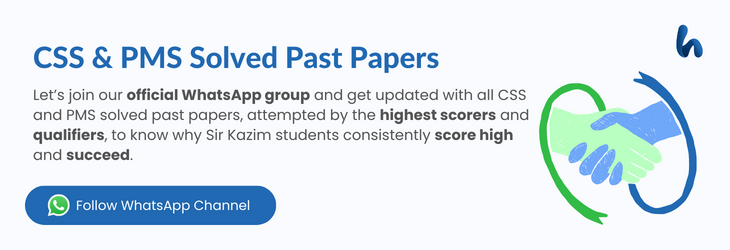
Topic Cracker: The First Step Most Students Ignore
Every CSS essay begins long before the first sentence is written. It begins with cracking the topic, yet this is precisely where most aspirants fail. Instead of dissecting the essay title, they skim it. Instead of decoding its structure, they assume its meaning. Similarly, instead of understanding its demand, they impose their own understanding on it.
For many students, a topic is nothing more than a familiar phrase they believe they can “manage.” But the truth is stark: An essay topic is never a collection of words; it is a question, sometimes direct, sometimes philosophical, always intentional.
If you fail to answer that question precisely, your entire essay collapses.
A true topic cracker asks the following questions:
- What is the command verb?
Is the examiner asking me to argue, analyze, examine, critique, justify, describe, or evaluate? - What is the subject matter?
What exactly am I expected to address? - What are the implied dimensions?
Are they political, social, economic, philosophical, ethical, global, or national? - What is the intellectual domain of the topic?
And what worldview or context anchors it?
Yet most students do not ask these questions. And they jump to writing because:
- “The topic looks familiar.”
- “Their teachers discussed something similar in class.”
- “This matches the outline they memorized from readymade notes and books.”
And this is the moment they unknowingly begin digging their competitive grave. Remember, if you cannot break the topic, you cannot frame the thesis. If you cannot frame the thesis, you cannot structure the argument. And If you cannot structure the argument, you cannot persuade the examiner with your viewpoint.
In CSS, failing to crack the topic is not just a mistake, it is a guaranteed failure. Ironically, fresh qualifiers, officers, social media teachers, and mercenary academies don’t teach the art of cracking the essay topic; instead force aspirants to read newspapers daily to learn to write essay. As a result, all aspirants who join such teachers always find themselves in vortex of depression in the examination hall.
How to avoid this mistake?
The only way to avoid misinterpreting an essay topic is to train your mind to break it correctly. Begin by practicing topic cracking on 30 to 40 past essay topics, preferably starting from the late 1990s to the present. Before writing full essays, train yourself to decode the titles. If you are guided by a genuine and seasoned English mentor, not an officer, not a fresh qualifier, and not a social media teacher, your topic crackers will be evaluated accurately, and you will learn how to refine your interpretation with academic precision.
Another effective method is to rewrite each topic as a direct question. This forces your mind to identify what the examiner truly wants. For instance, the topic “Mediocrity galore destroys the genius” becomes “How does mediocrity in society undermine individual brilliance?” This simple transformation shifts your mindset from guessing to answering, and removes ambiguity from the very beginning. My students must revise the first three lectures of topic crackers and thought process for better practice.
Equally important is to identify what the examiner is NOT asking. This protects you from irrelevant content, unnecessary narration, emotional commentary, or historical storytelling. By filtering out what the topic does not demand, you learn to write with clarity and discipline.
To strengthen your interpretation further, use the “One-Sentence Stance” technique. Summarize the essence of the topic in one precise academic sentence. This becomes the foundation of your thesis statement and ensures that the entire essay stays focused on a single, coherent argument.
It is also crucial to discuss three to four topics every week with a mentor, not to collect outlines, but to develop conceptual understanding. A skilled teacher will refine your interpretation long before correcting your writing. This mentorship ensures that your conceptual foundation is solid, which is the true prerequisite for academic writing.
Most importantly, avoid ready-made outlines, YouTube topic interpretations, and social media explanations. These destroy originality and mislead your reasoning. Real professors and genuine teachers do not create stunts, advertisements, or rehearsed videos for social media. They do not produce recorded lectures promising to teach writing in a few hours because they understand that each student needs individual guidance, and such precision can never be delivered through pre-recorded material. Never rely on someone else’s broken topic; your brain must do the intellectual work.
Finally, train yourself to differentiate between similar-looking topics. Titles such as,
- “Globalization: The End of Austerity,”
- “Globalization and Sovereignty,”
- “The Politics of Globalization”
They may appear related, but each demands a different analytical approach, domain understanding, and argumentative structure. Learning these nuances sharpens your interpretative skills and prevents conceptual blunders.
Remember, learning and practicing topic cracking is the first and most essential step in mastering the essay. Without it, everything that follows, thesis, arguments, outline, structure, becomes a cascade of errors. With it, the entire essay becomes grounded, disciplined, and examiner-friendly.
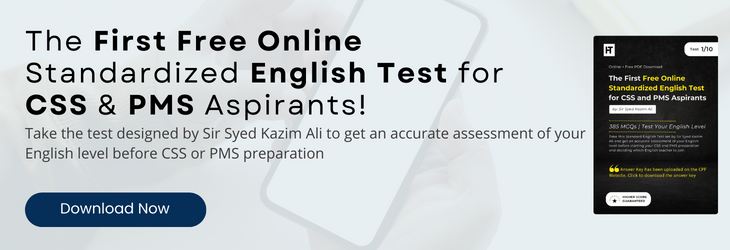
Understanding the Type of Essay: The Hidden Reason Most Aspirants Fail
One of the most overlooked reasons behind consistent CSS and PMS essay failure is shockingly simple: Aspirants do not know what kind of essay they are being asked to write.
Every CSS essay topic belongs to a specific intellectual genre. It is never a random statement casually placed on the paper. Each topic is intentionally designed with a particular expectation, a specific mental lens, through which the examiner wants you to think, argue, and respond.
Yet, most aspirants approach every topic with the same mindset, the same structure, and, disastrously, the same memorized outline. This intellectual laziness is why:
- They write a philosophical reflection when the examiner demanded an analytical argument.
- They narrate history when the task required them to evaluate contemporary realities.
- They describe events when the examiner expected a reasoned stance supported by logic and evidence.
CSS essays commonly fall into the following categories:
- Philosophical Essays
Abstract, idea-driven, reflective, and conceptually deep. - Analytical Essays
Focused on dissecting issues, breaking them into dimensions, and exploring causal mechanisms. - Cause-and-Effect Essays
Organized around why something happens and what it leads to. - Comparative Essays
Evaluating two ideas, systems, or phenomena side by side. - Argumentative Essays
Built on a clear stance, defended through reasoning and evidence. - Persuasive Essays
Aimed at convincing the reader ethically, emotionally, and logically. - Descriptive Essays (Rare in CSS)
Observational, narrative, and illustrative, almost never the main demand.
Despite this diversity, aspirants treat all topics as interchangeable, forcing every prompt into the same rigid essay structure they memorized from notes or lectures.
This is academic malpractice. A serious student must begin by identifying:
- Is this topic centered on an idea or an issue?
- Is it abstract or concrete?
- Does it demand reasoning, evaluation, explanation, comparison, or theorization?
- Is the examiner testing my worldview, my analytical depth, or my argumentative strength?
Without this fundamental diagnosis, the essay becomes a body without a skeleton: shapeless, unsupported, and intellectually lifeless.
Understanding the type of essay is not just helpful; it is the foundation upon which every argument, paragraph, and conclusion must stand.
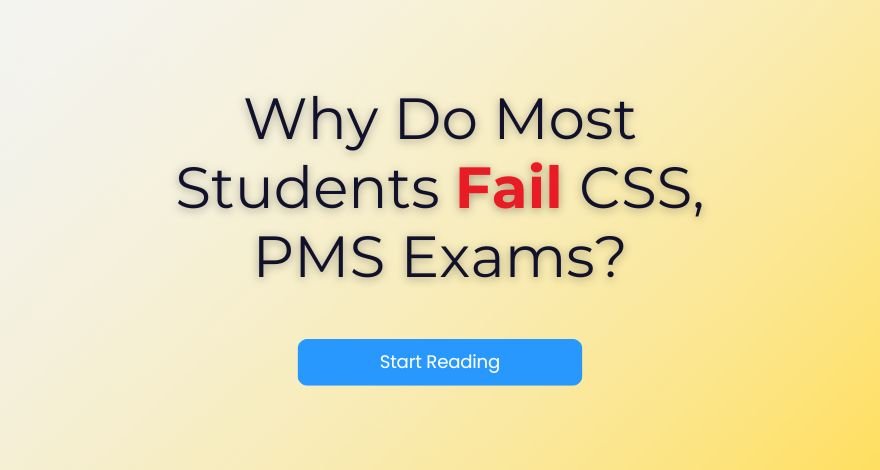
Thesis Statement (The Stance): The Most Brutally Mishandled Component of the CSS & PMS Essay
The thesis statement is the spine of the essay. It is the brain that commands the body, the compass that directs the ship, the verdict that shapes the entire argument.
And yet, this is exactly where most CSS and PMS aspirants commit their gravest academic sins. Most students:
- avoid taking a stance,
- take a vague or diluted stance,
- take a contradictory stance, or
- scatter their stance loosely across paragraphs, never anchoring the essay to a single, clear claim.
But the problem goes even deeper. Students write descriptive thesis statements in argumentative essays. They write abstract, philosophical theses in narrative or issue-based essays. You know, Why? Because they do not know what to write, when to write it, and how to adapt the thesis to the essay genre.
This confusion is made worse by a deadly assumption: They believe that reading newspapers and writing like journalists will help them qualify. Journalistic writing is descriptive, emotional, scattered, and often reactive; CSS essay writing is analytical, disciplined, structured, and intellectually grounded. The two belong to entirely different worlds.
Another fatal omission: Students ignore counter perspectives, assuming that one-sided writing appears stronger. In reality, the inability to acknowledge, neutralize, and academically defeat opposing views exposes intellectual weakness.
What a Thesis Statement Must Do
A thesis is neither a summary nor an introduction. Similarly, it is not a promise that you will “discuss things from different angles.” In fact, a thesis is your clear verdict on the topic. Remember, it always tells the examiner three things:
- What you believe,
- Why you believe it, and
- How you intend to prove it.
So, a strong thesis must always be clear, defensible, narrowed, focused, and aligned with the essay genre. Always remember, if your stance is not visible; your direction is not traceable; your logic is not predictable; and your argument is not measurable, then your essay is invisible. And invisible essays fail.
How to avoid this mistake?
To avoid collapsing your essay from the very first paragraph, you must learn to craft thesis statements with precision. Begin by practicing one-sentence theses for 20–30 past topics. Reduce each topic to a single, clear, defensible claim. This sharpens your focus and prevents vague, descriptive, or contradictory openings.
Next, understand the difference between argumentative, analytical, philosophical, and cause-effect essays. Each genre demands a different style of thesis. An abstract thesis in a concrete topic, or a descriptive stance in an argumentative essay, immediately weakens your entire essay. Align your thesis with the type of essay you are writing.
Always build your thesis with a hint of justification. The examiner must instantly see why your stance is logical. Without direction, a thesis becomes mere opinion; with reasoning, it becomes argument.
For better practice, Cssprepforum remains the most trusted platform for mastering this art through structured practice and authentic methodology.

Supporting Arguments (Rational vs Emotional)
In CSS essay writing, arguments are the engine that drive your thesis forward. They are the intellectual backbone of your stance. Yet, this is the exact place where most aspirants abandon reasoning and fall back on emotionalism, mistaking passion for persuasion.
Remember, the CSS and PMS examiner does not reward the following:
- moral preaching,
- cultural lamentation,
- social complaints,
- ideological exaggeration,
- religious sentimentality, or
- political biases.
These are not arguments. These are reactions. And reactions have emotional weight, but they have no analytical value. However, in the CSS essay paper, the examiners evaluate analysis, not emotion.
You must remember that a strong supporting argument must be
- Logical — flowing from the thesis and leading to a clear point.
- Evidence-driven — supported by facts, data, or established reasoning.
- Cause-effect based — showing why something happens and what it leads to.
- Comparative — revealing contrasts and implications.
- Explanatory — unpacking the “why” behind the “what.”
- Directly relevant — never wandering away from the thesis.
Yet most aspirants do the opposite. They stuff the essay with irrelevant points hoping quantity will impress, repeat the same idea in different words to fill space, confuse examples with arguments, or dump a list of facts without connecting them to their stance.
This turns the essay into a collection of disconnected thoughts, not a structured analytical piece.
Nevertheless, a CSS argument must breathe: it must expand, deepen, and advance the essay step by step. It should not suffocate the examiner with emotional noise or redundant commentary.
So while writing arguments, always remember that arguments convince the mind; emotions only distract it. A perfect essay is never emotional; it is intellectually irresistible.
How to avoid this mistake?
- Turn every reaction into a question first
Before writing an argument, ask yourself: “What exactly am I trying to prove?”
If you cannot frame it as a clear question, you are about to write emotion, not argument.
- Use the PEEL pattern for every argument
- Point – Make a clear claim linked to your thesis.
- Explain – Unpack the logic behind it.
- Evidence – Add data, reports, examples, or case studies.
- Link – Connect it back to the thesis.
This automatically pushes you towards reasoning instead of ranting.
- Ban “sermon language” from your essay
Phrases like “we must,” “our society should,” “this is very bad,” signal emotionalism. Replace them with analytical language: “This leads to…”, “This results in…”, “This undermines…”, “This strengthens…”.
- Limit each paragraph to ONE central idea
If a paragraph carries 3–4 mini-ideas, you’re listing, not arguing. One paragraph → one argument → fully developed.
- Pair every claim with a why and a consequence
Train yourself:- “X is a problem because …, and therefore it leads to …”
When “because” and “therefore” are missing, your argument is incomplete.
- “X is a problem because …, and therefore it leads to …”
- Practice rewriting emotional paragraphs into analytical ones
Take any emotional passage you’ve written and rewrite it using facts, cause-effect, and neutral tone. Do this regularly; it rewires your writing instinct from emotional to rational.
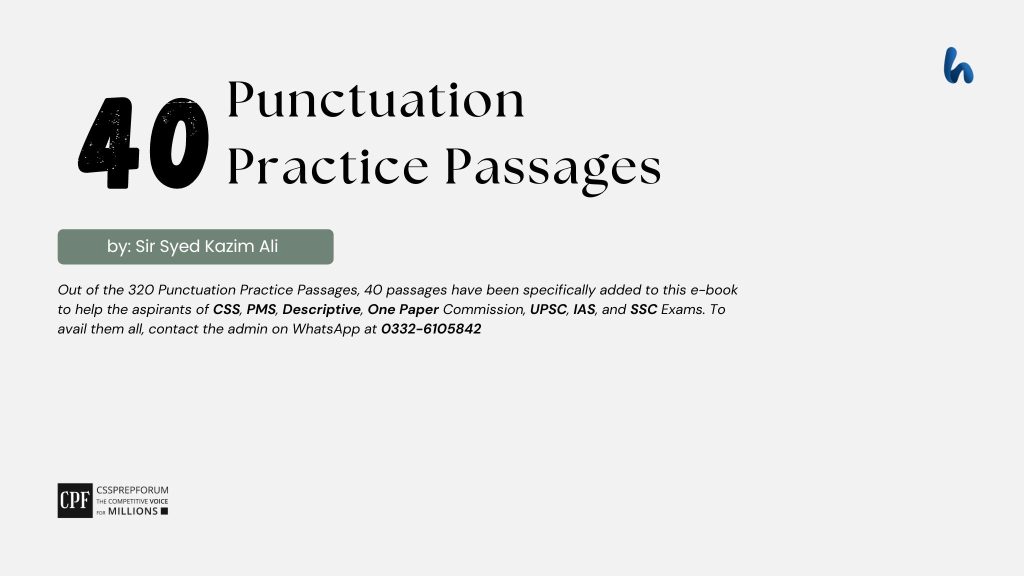
Case Studies: The Strategic Weapon Most Students Mishandle
Although optional, case studies are not decorative add-ons in a CSS essay; they are strategic academic weapons, used to authenticate your argument, demonstrate real-world relevance, and prove that your reasoning is grounded in reality, not imagination.
Yet this is exactly where aspirants commit catastrophic mistakes. Instead of using case studies as intellectual evidence, they
- force irrelevant examples simply because they memorized them,
- misquote facts and dates, exposing poor preparation,
- borrow inaccurate data from social media, assuming the examiner won’t notice,
- copy-paste outdated events that no longer align with contemporary context,
- distort historical incidents, thinking creativity equals competence.
But in CSS, imprecision is penalised. A flawed case study does not just weaken your argument; it destroys your credibility as a writer.
A CSS-quality case study must always be:
- Relevant — directly connected to the argument it supports.
- Accurate — factually correct and contextually appropriate.
- Purposeful — used to clarify, validate, or illustrate a point.
- Credibility-enhancing — strengthening your position through evidence.
Remember, case studies should never feel like detached stories. They must function as intellectual reinforcements, each one tightening the logic of your essay.

Counterarguments: Agree vs Acknowledge
A high-scoring CSS essay is never one-dimensional. It does not shout a single opinion from start to finish. It engages, anticipates, addresses, and defends. This is where the role of a counterargument becomes indispensable.
But most aspirants mishandle counterarguments so severely that they unintentionally sabotage their own essays. They often do any of the following:
- avoid counterarguments altogether out of fear that acknowledging an opposing view will weaken their stance,
- treat counterarguments like separate mini-essays, breaking flow and disrupting structure,
- agree instead of merely acknowledging, unintentionally surrendering their own position,
- or refute objections emotionally, converting academic reasoning into personal opinion or reactive commentary.
All four mistakes are fatal. A counterargument is not written to derail your thesis: it is written to strengthen it. Remember, a strong counterargument demonstrates the following:
- intellectual maturity, showing you understand the debate beyond your own viewpoint,
- awareness of complexity, proving the issue is multidimensional,
- command over discourse, reflecting that you can handle opposition with logic, not emotion.
The key is understanding the difference:
- Agreeing means giving up your stance.
- Acknowledging means recognizing the validity of a concern without surrendering your argument.
A CSS-worthy counterargument follows a disciplined sequence:
- Acknowledge the opposing concern,
- Contextualize why it holds some relevance,
- Refute it through stronger reasoning,
- Reaffirm your thesis with greater authority.
This is what impresses examiners. Not rigidity. Not one-sidedness. Not emotional defensiveness.
How to avoid this mistake?
To avoid mishandling counterarguments, train yourself to treat them as strategic tools, not threats. Begin by understanding that acknowledging an opposing view does not weaken your stance; it strengthens it. The goal is not to agree with the counterpoint but to recognize its relevance, address it logically, and then re-anchor the discussion in your own position.
Start by practicing the four-step counterargument model, that I have always teach my students:
- Acknowledge the concern with academic neutrality.
- Contextualize why this perspective exists.
- Refute it using stronger reasoning, evidence, or broader context.
- Reaffirm your thesis with enhanced clarity.
Next, avoid treating counterarguments as mini-essays. They belong within your argument, not outside it. A well-written counterargument is usually one to two paragraphs, seamlessly integrated into the essay’s flow. Its purpose is to show command over complexity, not to derail your structure.
Train yourself to rely on logic instead of emotional rebuttals. Replace reactive language with analytical phrasing such as:
- “However, this perspective overlooks…,”
- “This concern, though valid, fails to account for…,” or
- “In contrast, a broader analysis reveals….”
Most importantly, learn this art through structured guidance. Platforms like Cssprepforum teach aspirants how to construct counterarguments academically, ensuring your stance becomes intellectually defensible rather than emotionally compromised.
A well-handled counterargument showcases balance, depth, and maturity; and these qualities examiners reward generously.
Newspapers: The Silent Destroyer of CSS Preparation
Another most misunderstood and intellectually damaging habits among CSS aspirants is their absolute dependence on newspapers for essay preparation. The tragedy is simple:
Aspirants mistake newspapers for knowledge, and in doing so, they build opinions over opinions, not opinions over knowledge, and that is why they fail.
Remember, newspapers are not academic material. They are public media tools written for influence, speed, and emotional engagement, not for scholarly analysis.
Newspapers are opinionated as every article reflects the writer’s personal stance, political leaning, or organizational agenda. For example, a columnist blaming “poor governance” for inflation without offering data, global comparisons, or structural analysis.
Further, they are emotionally charged: Headlines and stories often use dramatic language meant to provoke reaction, not reason. For example, words like “crisis,” “collapse,” “betrayal,” and “disaster” create emotional impressions, not analytical clarity.
Next, they are subjectively written: Two newspapers can report the same issue with completely different interpretations. For example, one may praise a policy as “reform,” another may condemn it as “authoritarianism.”
Besides, they are not academically structured: Articles lack thesis statements, topic cracking, multi-layered arguments, counterarguments, or evidence-based reasoning. Above all, they are misleading for essay writing: Aspirants begin to believe that stylish, rhetorical, opinion-heavy language equals quality writing.
What Newspapers, Low Quality CSS Magazines Actually Do to Your Mind
Newspapers and other low quality CSS magazines present ready-made opinions. Students adopt them without questioning the logic, evidence, or gaps.
Example:
A student reads an article about climate change blaming only government negligence and ends up writing an essay with the same one-sided view, ignoring global patterns, scientific debates, and structural causation.
Moreover, newspaper writers rarely build layered, logical arguments. They jump from claim to claim. Students copy this style.
Example:
Aspirants list five problems in five paragraphs, with no causal link, no argument, and no progression.
Besides, journalistic writing uses rhetorical flourishes, emotional vocabulary, and dramatic tone. However, academic and formal writing demands the following:
- precision
- neutrality
- structure
- evidence
Last but not least, newspapers do not train the mind to:
- crack topics,
- build theses,
- develop arguments,
- use counterarguments, or
- synthesize conclusions.
Students absorb opinions instead of learning reasoning.
The Cost of Relying on Newspapers
Newspapers shape opinionated minds, not trained thinkers. Aspirants unknowingly gather opinions of journalists, biases of columnists, emotional language of media, incomplete facts, one-sided arguments, and subjective interpretations.
When they sit in the CSS exam, they reproduce the same, opinion over opinion, not opinion over knowledge. And this is why they fail.
CSS essays require trained reasoning, not recycled opinions. They reward intellectual discipline, not journalistic emotion.
When Newspapers Become Useful
Newspapers are harmful when they are used as the foundation of CSS preparation, but they become extremely valuable once the foundation is already built.
If you have thoroughly prepared a topic or theme, if you already understand the core concepts, the analytical dimensions, the global and national context, the causes and consequences, the debates and counterarguments, then newspapers transform from a trap into a tool.
At this stage, newspapers no longer shape your opinions; they update your knowledge. Once you know the fundamentals of a topic like climate change, economy, governance, education, foreign policy, or gender issues, newspapers give you the latest data, events, and policy changes.
For example, if you already understand global inflation dynamics, a recent article on Pakistan’s monetary policy helps you enrich your argument, not replace it.
In this way, a serious aspirant can easily extract useful numbers, findings, and insights from budget summaries, economic reviews, UN reports, IMF updates, policy statements, etc.
Similarly, case studies remain the backbone of CSS essays. Newspapers provide recent cases which sharpen your credibility. For example, if you understand the theory of digital governance, a new story about Estonia or Pakistan’s e-government initiative becomes a strong case study.
Once your conceptual framework is solid, newspapers help you observe the following:
- political angles,
- economic implications,
- public reactions,
- and global interpretations.
Always remember, a well-prepared topic becomes stronger when supported by fresh:
- examples,
- data,
- policies,
- reforms,
- global shifts,
- and national realities.
This makes your essay contemporary rather than textbook-like.
Newspapers are valuable only when your knowledge is already established. If you prepare through newspapers, you build opinions over opinions. If you update through newspapers, you build knowledge over knowledge. A prepared mind uses newspapers wisely. An unprepared mind becomes a victim of them.
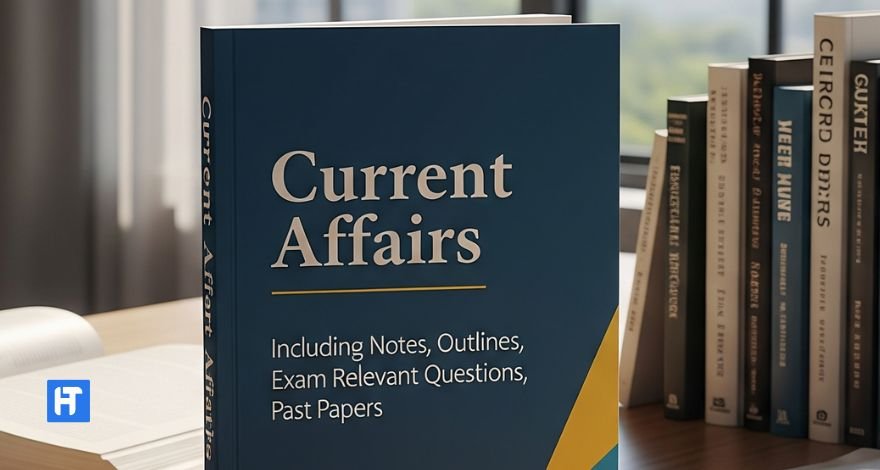
Qualifiers, Officers & Social Media Coaching: A Manufactured Illusion That Destroys Aspirants’ Futures
One of the most damaging trends in CSS preparation today is the blind following of some officers and fresh qualifiers (not all), who teach on social media, not because they are seasoned teachers, but because they passed the exam once.
Aspirants mistake visibility for credibility, assuming that someone who cleared the exam must naturally know how to teach it. But this belief is academically disastrous. Passing CSS once does not mean one understands the science, structure, psychology, or pedagogy of teaching CSS writing.
Most social media teachers, officers, and fresh qualifiers teaching online and on campus are not experts in writing, linguistics, argumentation, logic, or academic methodology. They teach anecdotal experiences instead of academic frameworks. They promote shortcuts rather than skills. They offer personal opinions instead of structured reasoning. And because they are not trained in linguistics or academic writing, they cannot teach
- though process,
- topic cracking,
- thesis crafting,
- outlining,
- argument building,
- counterargument integration,
- or analytical writing mechanics.
They teach what worked for them once, not what works consistently for thousands, a dangerous foundation for any serious aspirant.
What amplifies the problem is self-advertising. Many such officers market themselves aggressively on social media, through videos, inspirational stories, uniforms, backgrounds, and motivational speeches. The more they advertise, the more aspirants assume they must be genuine experts.
But academically, the opposite is true: the more a teacher advertises, the less credible they usually are. Real experts don’t need to sell themselves; their work stands on its own. Their students become their advertisement. Their results speak with authority no video can manufacture.
Think of world-class academic institutions: Professors at LUMS, Oxford, Harvard, Cambridge, and Stanford are some of the most respected educators in the world. Yet, not a single professor from these institutions goes on social media recording videos in their office saying:
- “Come join my class!”
- “I am the best teacher!”
- “I cleared this exam, so I can teach you!”
They never do this because credibility does not need advertising. Quality markets itself. Excellence speaks silently.
A Harvard writing professor does not advertise because their expertise is real. An Oxford linguistics professor does not post motivational reels because their academic contribution, research, and teaching pedigree already stand far beyond public debate. Their authority is earned, not manufactured. Their teaching is backed by training, not by a uniform. Their credibility comes from skill, not from visibility. Instead, their students who became successful become their ambassadors. Remember, a teacher is always judged through his work and through his students’ remarks, not by his own videos and posts.
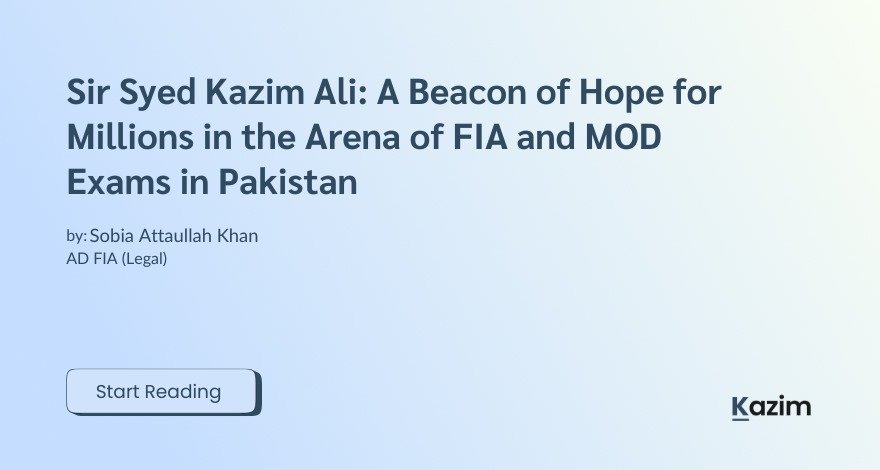
How to Choose the Right Teacher: A Practical, Evidence-Based Approach
In an age dominated by social media noise, choosing the right teacher has become one of the most critical and, perhaps the most neglected, steps in CSS preparation. Aspirants often fall for charisma, motivational speeches, or a glamorous online presence. Yet real selection must be grounded in credibility, not visibility; in evidence, not emotion. A mentor is not chosen because he speaks confidently, dresses impressively, or posts frequently. A mentor is chosen because he delivers results, demonstrates expertise, and has a proven academic footprint.
Before trusting anyone with your future, you must verify them, not through Facebook reels or Instagram aesthetics, but through Google, the only platform that preserves long-term credibility. When you search a teacher’s name on Google, observe what the academic world says about them. Do qualifiers and officers acknowledge their contribution?
Real teachers earn authentic praise from those who have actually cleared the exam, not from random followers. Read what aspirants write: are there testimonials, success stories, or consistent feedback over the years?
Moreover, check whether the teacher has solved real CSS or PMS past papers. Anyone claiming to teach writing must demonstrate expertise publicly and transparently, not through vague claims. Explore whether they have published guiding articles, frameworks, and academic analyses. Genuine educators produce intellectual work, not promotional content. Also notice whether their students contribute articles, essays, blogs, or analytical pieces. The strength of a teacher is reflected through the intellectual output of their students. A credible teacher’s reputation grows organically on Google, not artificially on Instagram.
It is equally important to understand how social media works. Platforms like Facebook, Instagram, TikTok, and YouTube run on advertising algorithms, not academic merit. With a small budget or a marketing agency, anyone can become “visible” in a matter of weeks. This digital visibility, however, has no academic value.
Paid advertisements can make an ordinary person appear extraordinary. They can create fame, but not expertise. Google, however, reveals the truth over time. One cannot buy long-term credibility on Google; it is earned through published work, student results, academic contributions, consistent teaching, and sustained impact.
A real teacher today is known not for his flashy videos or scripted reels, but for his published intellectual work. Genuine educators publish articles on their websites, build long-form content, document their teaching methods, create structured frameworks, write analytical pieces, and share knowledge openly. They do not hide behind copyrighted notes, nor do they paste scattered content into low-quality books for profit. They do not sell data disguised as “guides,” “handouts,” or “secret notes.” Publishing is a sign of intellectual confidence, while selling superficial material is a sign of academic insecurity. Experts showcase their thinking publicly; non-experts hide behind packaged material.
Always remember, your mentor should not be the most popular; your mentor should be the most proven.
Because the person you choose to learn from will shape your writing, thinking, reasoning, worldview, discipline, and ultimately, your future. The wrong mentor will limit you. The right mentor will transform you.
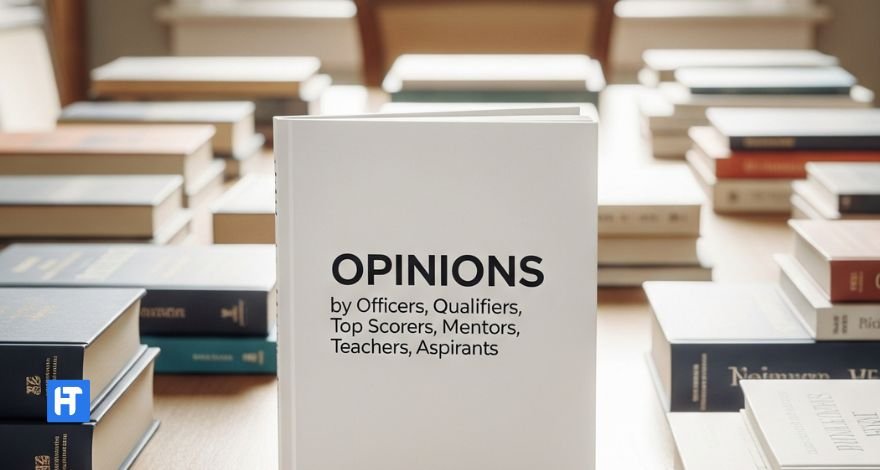
Ready-Made Outlines and Notes: The Intellectual Poison Destroying Aspirants
One of the most catastrophic mistakes CSS aspirants make is relying on ready-made outlines and notes. These materials do not train the mind; they paralyze it. They limit creativity, suffocate analytical thinking, and force a student to adopt someone else’s intellectual skeleton. Instead of learning how to think, reason, analyze, and structure ideas, aspirants simply memorize what another person has written. And because thousands rely on the same borrowed content, thousands fail for the same reason.
Students forget the most fundamental truth of essay writing: An essay is based on your rationality, not on someone else’s opinion.
Rationality is not a slogan. It is a composite of the following:
- your knowledge,
- your understanding,
- your experiences,
- your worldview,
- your interpretation of reality,
- and your unique intellectual lens.
And none of these can ever be identical for two people. You and I may read the same book, but we do not have the same age, maturity, exposure, experiences, upbringing, or personality. Therefore, we cannot have the same rationality. If rationality differs from person to person, how can a ready-made outline ever fit all of them? This is precisely why such outlines collapse in the exam hall: they are built on someone else’s mind, not yours.
When a student uses a ready-made outline, they do not express their own reasoning. They reproduce another person’s perspective. The examiner does not see individuality, depth, or maturity. They see dependency. They see imitation. They see the intellectual fraud of writing what you do not understand. This is why examiners repeatedly mention in reports that scripts look “similar,” “predictable,” and “mechanical.” Examiners do not fail students randomly—they fail them because their writing shows no originality, no independent thinking, and no intellectual ownership.
Real teachers understand this. Fake teachers do not. Real teachers teach the thought process, including how to crack the topic, how to generate arguments, how to craft thesis statements, how to create coherent structures, how to reason academically, how to handle counter perspectives, etc.
However, inept teachers do not teach this because they cannot teach it. They themselves never learned the mechanics of writing. Therefore, they sell notes, ready-made outlines, and recycled content. Selling notes is easy; teaching how to think is difficult. You might have seen such teachers making students believe that the more you write paragraphs, the more you will learn the art of writing. As a result, such teachers become the main reason behind the failure of thousands of aspirants yearly.
Examiners are exhausted from reading cloned introductions, recycled arguments, copied examples, and predictable conclusions. When hundreds of essays look identical, it is not difficult to fail them. In fact, the uniformity becomes a signal of academic weakness. CSS is a test of independent reasoning, not borrowed frameworks. When thousands write the same outline or reproduce the same ideas, the examiners understandably reject them. And they are right to do so.
Ready-made content does not prepare you. It prepares your failure. A CSS essay must reflect your mind, not someone else’s memory.

The Most Ignored Reality: English Writing Skills Decide Your Success, or Your Failure
The next most alarming blind spots in CSS preparation is the casual negligence of English writing skills. Aspirants devote months to optional subjects, current affairs, Pakistan Affairs, and countless lecture videos, but they give the least attention to the very skill that determines the outcome of every single paper: English writing. From reading to reasoning, from understanding to expressing, from forming arguments to presenting them: everything in CSS revolves around English.
Yet students believe that a few tips, quick tricks, and shortcut formulas will carry them through. Nothing could be more damaging. English writing is not something you learn in ten lectures or a single month. It takes four to five months just to gain grip, and then requires continuous practice to refine. In my career of evaluating thousands of aspirants, I have never seen a student fail who genuinely gave English its due importance, wrote 30 to 40 full essays, corrected every attempt, and practiced regularly. But every student who thought CSS English could be mastered through “notes,” “guides,” “lectures,” or simple observation has failed, without exception.
The truth is brutally simple: If you know how to write, you need only 5 to 6 months for CSS preparation. If you don’t, you waste your attempts: and every year’s CSS result is testimony.
Students waste entire years studying content without learning how to express ideas coherently. They assume that grammar is the essence of writing. It is not. Grammar is only the surface; the real structure of writing lies in:
- topic cracking,
- thesis writing,
- argument building,
- paragraph cohesion,
- analytical reasoning,
- cause-effect analysis,
- counterargument integration,
- academic tone,
- and structural mastery.
A grammatically correct essay can still fail if it lacks analytical depth, organization, coherence, and academic discipline. Grammar polishes writing; it does not create writing.
Another misconception is that writing daily paragraphs will lead to essay mastery. This is academically false. Paragraph writing builds basic expression, but essay writing demands far more: intellectual stamina, argument progression, structural unity, and command over 2000–3000 words of sustained reasoning. You cannot learn marathon running by jogging for five minutes. You cannot learn essay writing by writing daily paragraphs. Essays are learned by writing essays, not fragments.
The bitter truth remains: CSS is not an English exam; it is an English-based exam. And your performance in every subject is filtered through your English writing skills. When aspirants ignore this reality, they sabotage their own preparation and destroy their attempts.
Those who respect the process, give English its rightful time, learn the mechanics, practice relentlessly, and produce dozens of essays, succeed.
Contrarily, those who seek shortcuts, follow motivational noise, memorize outlines, or assume they will learn writing “along the way”, fail, and fail repeatedly. Simply put, your English decides your CSS. Ignoring it decides your failure.
In the end, the truth about CSS essay writing is neither glamorous nor mysterious—it is brutally simple and academically unforgiving. Aspirants do not fail because they lack intelligence, potential, or ambition. They fail because they rely on shortcuts instead of systems, opinions instead of knowledge, outlines instead of thinking, and emotional writing instead of disciplined reasoning. They fail because they prepare the essay superficially while the examiner evaluates it intellectually.
Every year, thousands walk into the examination hall believing effort alone guarantees success. But CSS is not a test of effort; it is a test of method. It rewards those who understand the mechanics of writing—topic cracking, thesis crafting, argument development, evidence integration, counterargument handling—and penalizes those who attempt the paper blindly, emotionally, or mechanically.
Your essay is not a reflection of how much you studied; it is a reflection of how you think. It exposes your intellectual depth, your interpretative clarity, your structural discipline, and your analytical maturity. It is a mirror that reveals the mind behind the pen.
The real difference between qualifiers and repeaters is not luck, background, or talent—it is training. Those who learn to think, reason, analyze, question, and structure ideas qualify. Those who seek shortcuts, follow noise, imitate others, or avoid practice inevitably repeat their mistakes until the exam eliminates them.
CSS essay writing is not a barrier; it is a gateway. It does not filter out the weak—it filters out the untrained.
Train your mind, and the essay becomes conquerable.
Neglect it, and the essay becomes the graveyard of your attempts.
The choice, as always, is yours.

